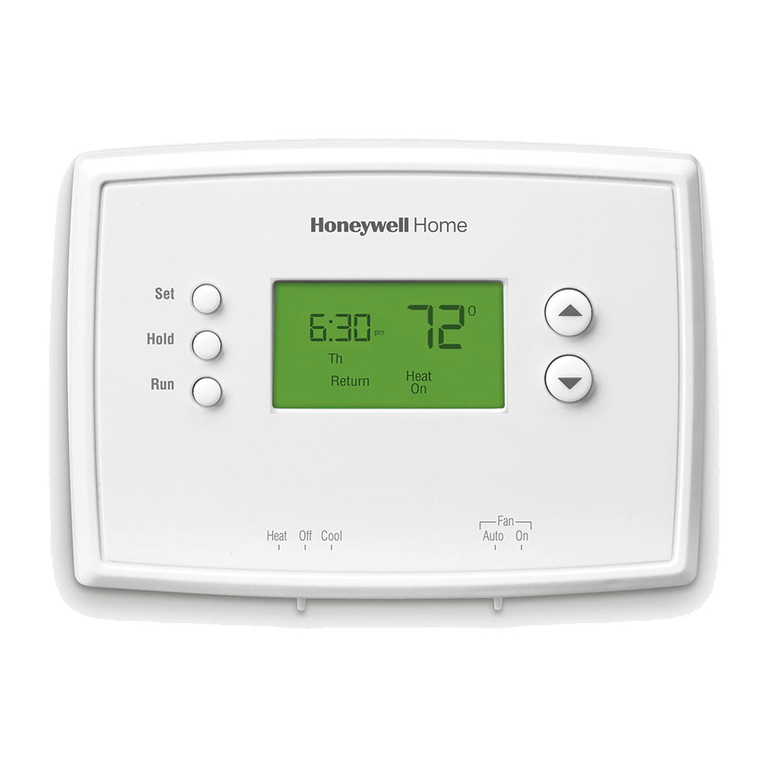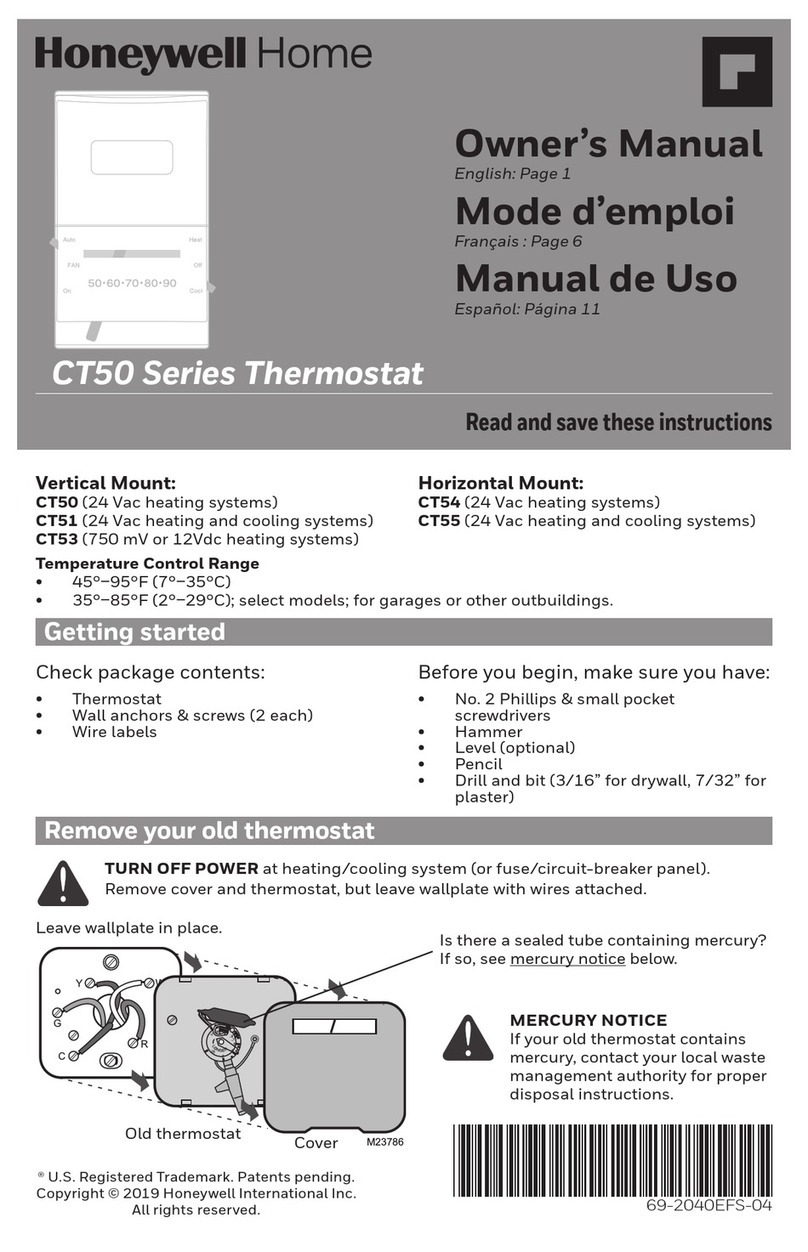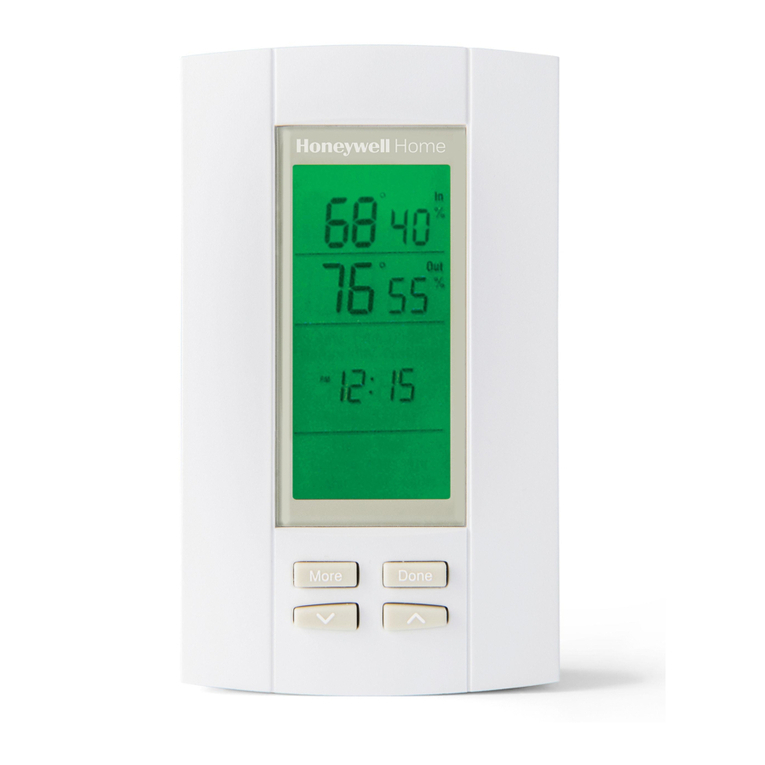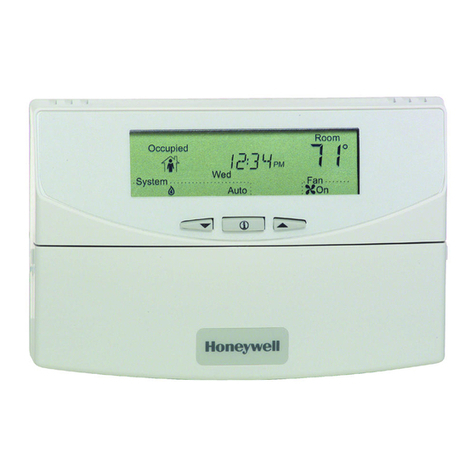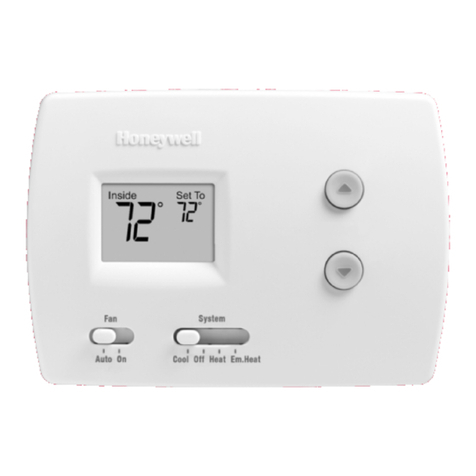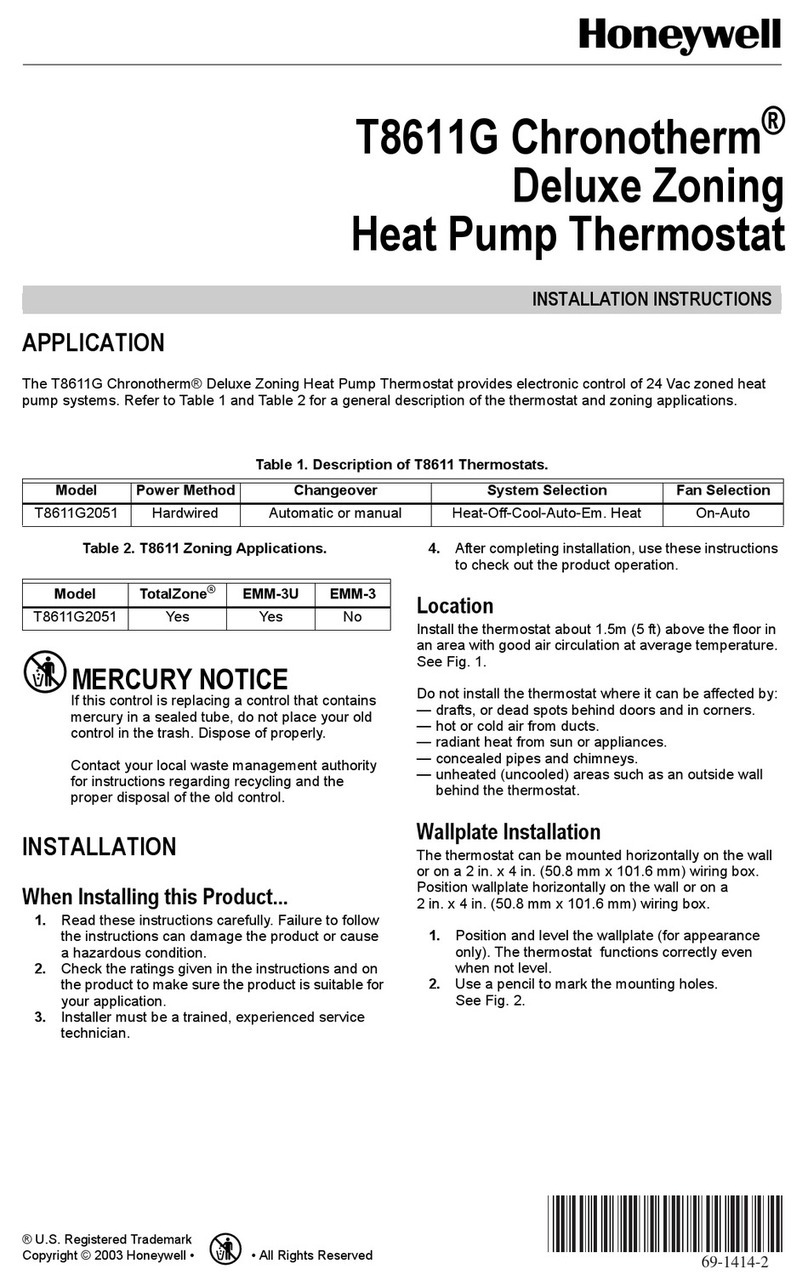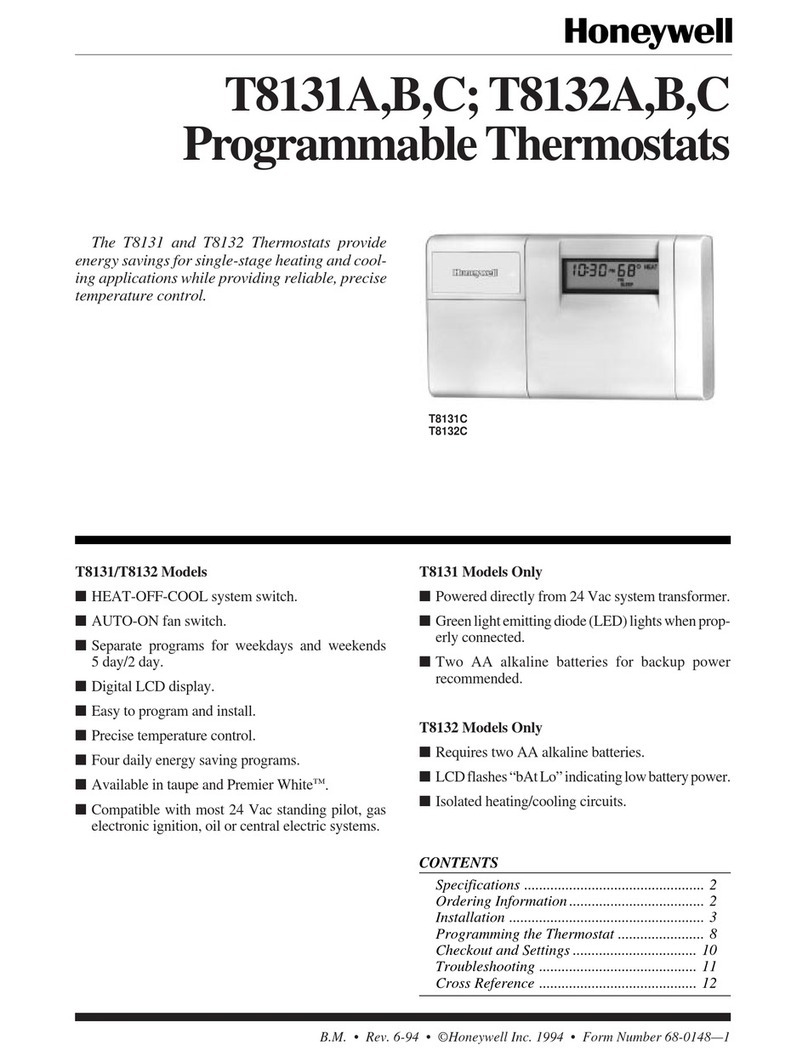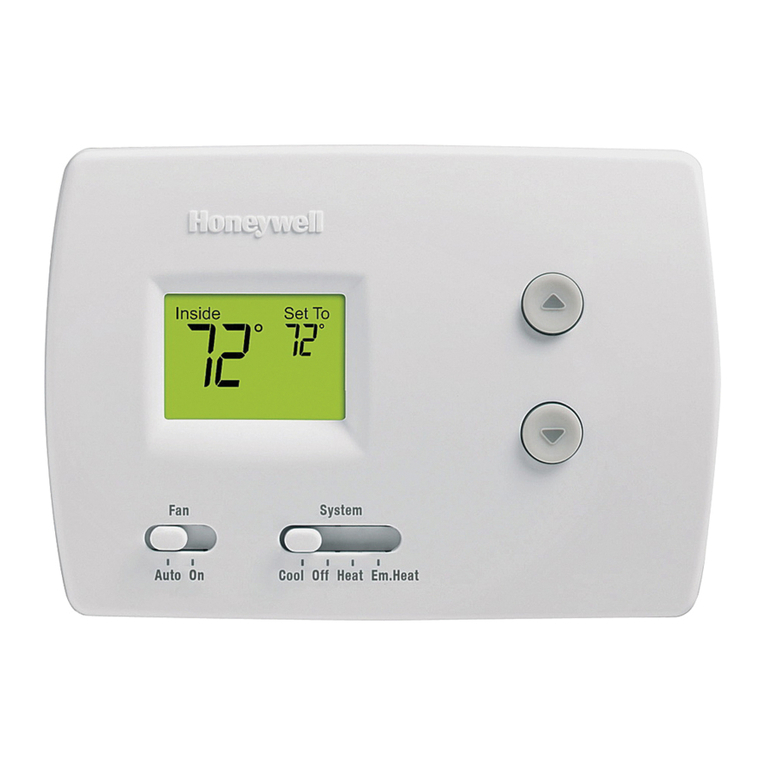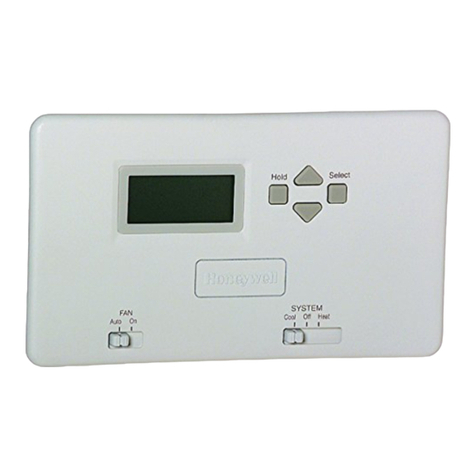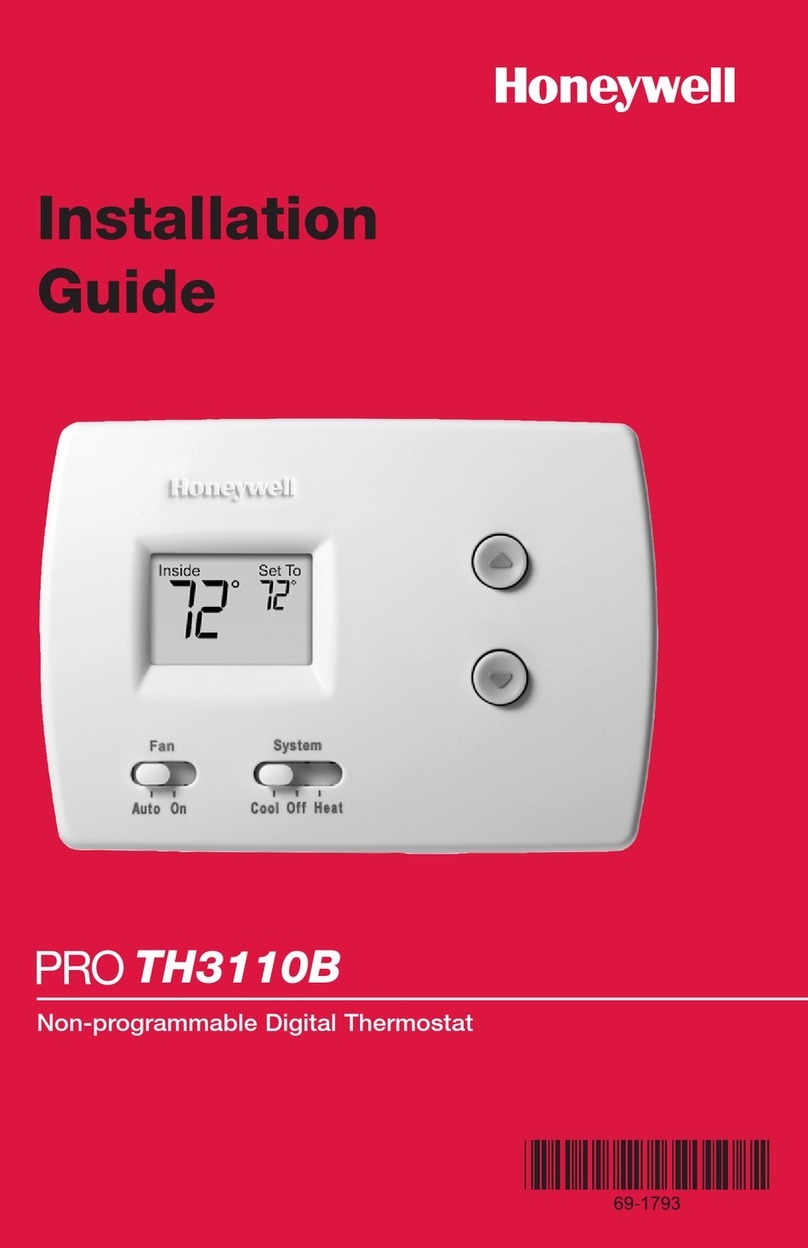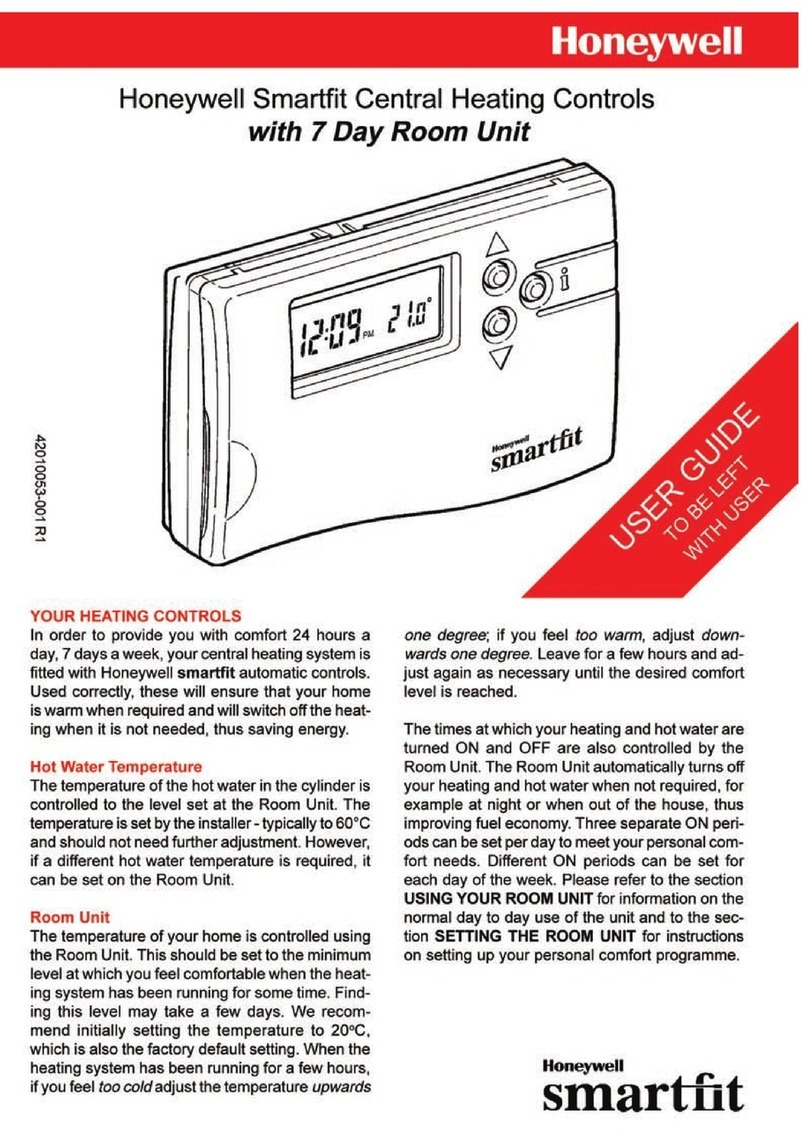T834B; T834C; T834J HEATING-COOLING THERMOSTATS
SETTINGS AND ADJUSTMENT
System and Fan Switching
T834B
The T834B features a SYSTEM swit h for ontrol of the
heating- ooling system.
The SYSTEM swit h ontrols system operation as follows:
HEAT: Heating system only operates.
OFF: Both heating and ooling ontrol systems are
dis onne ted.
COOL: Cooling system only operates.
The fan operates in response to the plenum fan ontrol in
heating; fan operates with ooling equipment in ooling.
T834C
The T834C features SYSTEM and FAN swit hes for
ontrol of the heating- ooling and fan systems.
The SYSTEM swit h ontrols system operation as follows:
HEAT: Heating system only operates.
OFF: Both heating and ooling ontrol systems are
dis onne ted.
COOL: Cooling system only operates.
The FAN swit h ontrols fan operation as follows:
AUTO: for onventional (gas, oil or entral ele tri heat)
systems, the fan operates in response to the plenum
fan ontrol in heating; fan operates in response to
the thermostat in ooling. For heat pump systems,
the fan operates in response to the thermostat in
both heating and ooling.
ON: The fan runs ontinuously.
T834J
The T834J features SYSTEM and FAN swit hes for
ontrol of the ooling and fan systems.
The SYSTEM swit h ontrols system operation as follows:
OFF: Cooling ontrol system is dis onne ted.
COOL: Cooling system operates.
The FAN swit h ontrols fan operation as follows:
AUTO: Fan operates in response to the thermostat in
ooling.
ON: Fan runs ontinuously.
NOTE: Some ele tri heat systems require ontrol of fan
operation from the thermostat. These systems
require a thermostat with ontrol of fan operation
in response to a all for heating or ooling.
To swit h positions, use thumb and index finger to slide
lever to desired position. Swit h lever must stop dire tly
over desired fun tion indi ator mark for proper ir uit
operation.
Temperature Setting
Push the temperature setting lever to the desired ontrol
point on the temperature s ale. The same lever ontrols
both heating and ooling. On models with temperature
range stops, temperature setting lever an be moved only
between the two temperature range stops.
HEAT ANTICIPATO SETTING
IMPORTANT
The T834 Thermostat has an adjustable heat
anticipator and will operate properl ONLY IF
THE ANTICIPATOR IS ADJUSTED TO MATCH
THE CURRENT DRAW OF THE PRIMARY
CONTROL. Use this thermostat onl on s stems
with current draws that fall within the range of the
heat anticipator. Do not use this device on
Powerpile® (millivolt) S stems.
Conventional Systems
A urrent rating is usually stamped on the nameplate of
the primary ontrol. Set the adjustable heat anti ipator
indi ator to mat h the value given on the nameplate.
If the urrent rating is not available, pro eed as follows to
determine the rating:
1. Turn off power.
2. Wire thermostat, ex ept for onne tion to
W terminal, but do not mount it on the wall.
3. Conne t ammeter between W wire and
W terminal on the thermostat.
4. Prepare the system for operation.
5. Turn on power.
6. Turn system swit h to heat.
7. In rease thermostat setpoint as ne essary to get
system operating.
8. With the system operating through the ammeter,
wait one minute, then read the ammeter.
9. Turn the system swit h to OFF, and turn off
power.
10. Adjust the heat anti ipator to mat h the reading
on the ammeter.
11. Dis onne t the ammeter, re onne t the W wire,
and mount the thermostat. Continue with system
he kout.
NOTE: The heat anti ipator may require further adjust
ment for best performan e. To lengthen burner-
on time, move the indi ator in the dire tion of the
longer arrows but not more than one-half s ale
marking at a time. To shorten burner-on time,
move indi ator in opposite dire tion.
Heat Pump Systems
(for about 3 cycles per hour)
Using B Terminal
Set adjustable anti ipator to 130 per ent of ombined
urrent draw of ompressor and fan relays.
Using O Terminal
Set adjustable anti ipator to maximum s ale setting. Limit
ombined load urrent of ompressor and fan relays to
0.8 amp, be ause ooling anti ipator provides anti ipation
during heat y le in these hookups.
69-0444— 10 6



